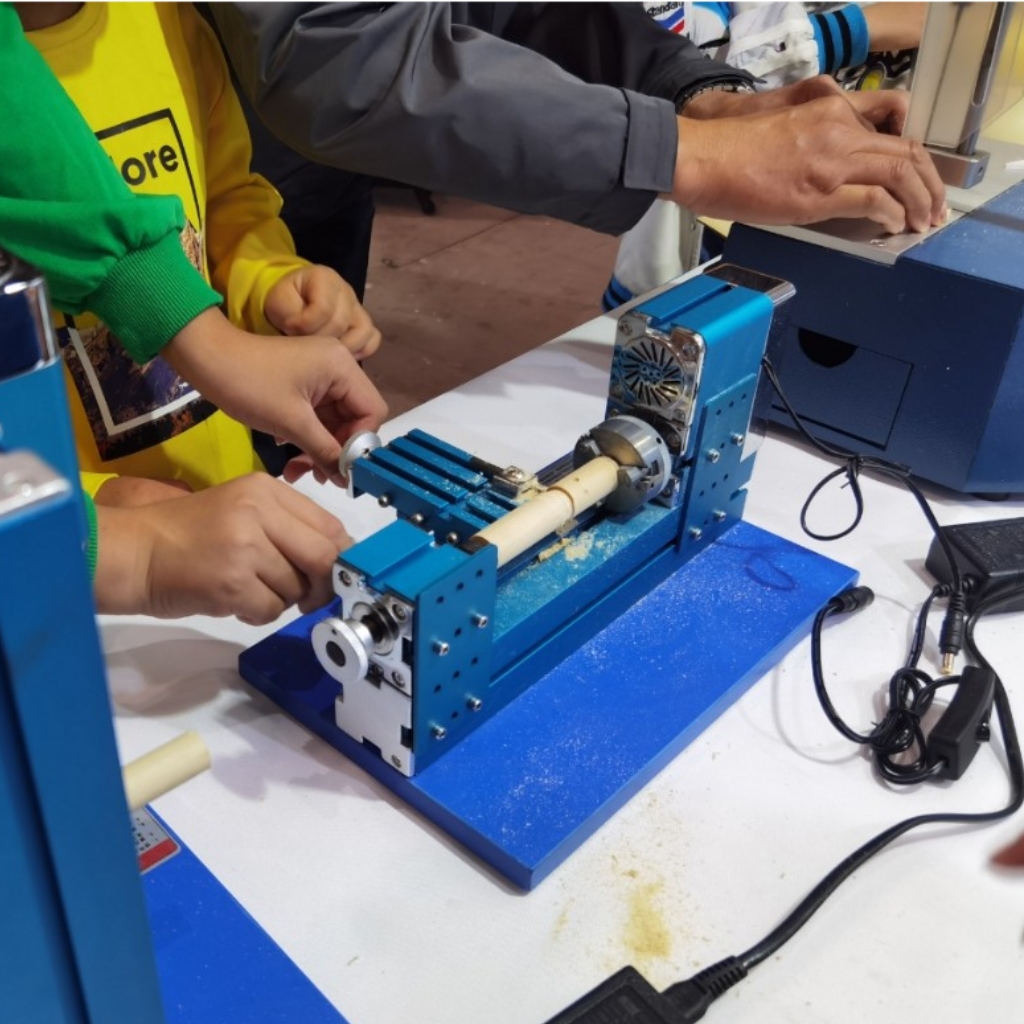Blog
Xendoll has 22 years of experience in the production of small machine tools. We will help you choose the suitable machine and share our experience in CNC machining with you.
 Jun 25, 2025
Jun 25, 2025

 840
840
Stepping up to a metal lathe like the versatile Metal Machine Series is exciting, but knowing where to start can be daunting. Choosing the right beginner projects is crucial – they should build fundamental skills, be achievable, produce useful items, and, most importantly, be safe. This guide outlines five ideal starter projects designed to boost your confidence and competence on your mini lathe.

1. Machining Practice & Calibration Rod
Why it's Perfect: Before tackling complex parts, mastering basic tool control is essential. Turning a simple rod to specific diameters and lengths is the foundation.
Key Skills Learned: Setting up stock securely in the chuck, using the carriage handwheel for longitudinal feed, using the cross slide for depth of cut, measuring accurately with calipers/micrometers, achieving target dimensions and surface finish.
Operations: Facing (creating a flat end), straight turning (reducing diameter along length), parting off (cutting the finished piece).
Xendoll Tip: Start with aluminum or brass for easier machining. Use sharp High-Speed Steel (HSS) tools ground correctly. Our machines' precise dials make hitting those target dimensions achievable.
Safety First: Always use the chuck guard and safety glasses. Secure long stock with a tailstock center if needed to prevent vibration.
2. Simple Tool Handle (e.g., Hammer, Punch, or File Handle)
Why it's Perfect: Combines fundamental operations into a practical, satisfying item. You create something genuinely useful for your workshop.
Key Skills Learned: Turning between centers (optional but good practice), tapering (using the compound slide), knurling (adding grip), drilling/boring (for the tool tang hole), polishing.
Operations: Facing, straight turning, tapering, knurling, drilling/boring, parting off, sanding/polishing.
Xendoll Tip: Wood or durable plastic like Delrin is great for handles. Our mini lathes handle these materials effortlessly. Practice tapering speeds/feeds on scrap first. Use live centers for support.
Safety First: Ensure knurling tools are securely mounted. Use cutting fluid sparingly on plastics. Keep fingers clear of rotating knurls.
3. Basic Bushing or Spacer
Why it's Perfect: Introduces concentricity and precise internal machining – core skills for repair work or custom fittings. Bushings are incredibly common workshop needs.
Key Skills Learned: Drilling accurately on-center, boring to precise internal diameters (ID), achieving specific wall thickness, ensuring concentricity between OD and ID.
Operations: Facing, straight turning (OD), center drilling, drilling, boring (ID), parting off, chamfering (deburring edges).
Xendoll Tip: Start with a pre-drilled hole slightly smaller than your target ID. Use small boring bars suitable for mini lathes. Our machines' rigidity ensures accurate boring without chatter. Measure ID frequently.
Safety First: Ensure boring bars are rigidly mounted and not extended too far. Clear swarf (metal chips) frequently, especially when drilling/boring deep holes.
4. Metal Mallet Head
Why it's Perfect: A step-up project incorporating multiple diameters and potentially threading. Creates a very durable and useful shop tool.
Key Skills Learned: Turning multiple diameters on one workpiece, creating sharp shoulders, potentially single-point external threading (for attaching a handle), facing large surfaces.
Operations: Facing, straight turning (multiple diameters), shoulder turning, threading (optional - can also use epoxy/press-fit), chamfering, polishing.
Xendoll Tip: Mild steel is ideal. If threading, practice on scrap first! Our mini lathes' gearboxes (check your model) make threading straightforward. Consider adding decorative grooves.
Safety First: Ensure the workpiece is very securely chucked, especially for larger diameters. Use lower speeds for threading. Keep hands away from the rotating chuck.
5. Custom Bolts or Nuts
Why it's Perfect: Teaches the vital skill of threading – essential for countless future projects and repairs. Very rewarding to make your own fasteners.
Key Skills Learned: Single-point external threading (bolts), single-point internal threading (nuts), precise diameter control for thread fit, using thread gauges, chamfering.
Operations: Facing, straight turning (to major/minor diameter), threading (external or internal), parting off (bolts), drilling/boring/tapping (nuts - if not single-pointed), chamfering.
Xendoll Tip: Start with coarse threads (e.g., UNC 1/4-20) on brass or mild steel. Use sharp HSS threading tools ground accurately. Our lathes' stability is key for clean thread forms. Practice, practice, practice on scrap!
Safety First: Extreme focus is needed during threading. Engage the half-nut precisely. Use very low speeds. Keep fingers well clear of the cutting tool during the threading pass.

Conclusion: Build Skills, Build Confidence, Build Value
These five projects – from fundamental practice rods to functional bolts – provide a structured path to metal lathe proficiency. By starting simple and focusing on core operations like facing, turning, boring, and threading, you'll develop the muscle memory and understanding needed for more complex creations. Remember, consistent practice, strict adherence to safety protocols (always!), and using a capable, precise mini lathe like the Xendoll Metal Machine Series are your keys to success. Visit xendolltools.com to explore our range of reliable, beginner-friendly metal lathes and accessories designed to support your machining journey from the very first project. What will you turn first?



 Show all our samples
Show all our samples
 Provide you with a free quote
Provide you with a free quote
 Answer all the questions you may have
Answer all the questions you may have
 Guided installation and other options
Guided installation and other options